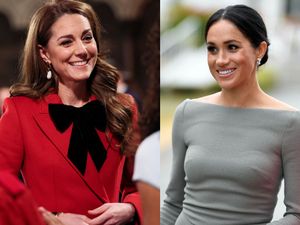Dreaming of a green Christmas: How to have a planet-friendly festive season
Christmas may be the most wonderful time of the year, but it’s can also be one of the most wasteful.
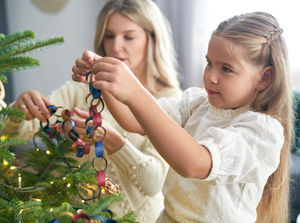
It's estimated that traditionally homes up and down the UK create 30 per cent more waste than usual during the festive period.
But we are living in time when we have never been more aware of our need to do our bit to protect the environment.
So for those of you dreaming of a greener Christmas that doesn't cost the earth, Weekend has compiled some of the best ways to be kinder to the planet while still enjoy everything this season has to offer.
FOOD
Food is a valuable resource and yet every year in the UK we throw away a fifth of all the food we buy.
The cost of this wasteful action can mount up quickly, both in terms of the money we waste and the damage that it has on the environment.
Not only do we spend our hard-earned wages on food we never eat, but then we pay our council to take it away and process it.
Binning, removing, treating and dumping our food results in the release of harmful gases, including methane and carbon dioxide, which is bad news for the planet.
For a more environmentally-friendly Christmas dinner and other festive meals, The Woodland Trust says we should firstly consider packaging.
As with all purchases, it recommends avoiding plastics and other non-recyclable packaging where possible. Next, think about food miles, groceries shipped over long distances have a higher environmental impact than buying locally.
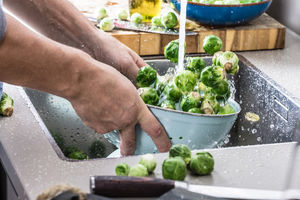
Choosing seasonal home-grown produce will also show support for local businesses when they’ve had a tough year.
The Vegetarian Society's list of fresh produce that it's season this month includes apples, beetroot, brussels sprouts, leeks, red cabbage, Salsify, swede, turnips and winter squash.
Reducing our food waste is another way to be kinder to the environment. Love Food Hate Waste recommends always checking what food you already have in your home before going to the supermarket or market to avoid doubling up on items you already have.
Plan meals carefully to ensure you are only buying what you need and be realistic about what you or your family will eat. If there’s something you always make at Christmastime because “it’s traditional”, but no one actually eats it, leave it off the menu.
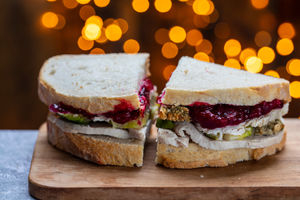
Consider the edible life of the food you are buying and the space you realistically have for keeping it fresh.
Limit the ‘buy just in case we need it’ food as it's often these items that we don’t eat in time and chuck in the bin.
If you end up with leftovers then think about whether they could be frozen, donated to a local charity or listed on a food waste app to make sure they get used.
Instead of clingfilm, use Tupperware, foil and wax cloth covers to keep leftovers nice and fresh, says WWF-UK.
Love Food Hate Waste has plenty of recipes and ideas about what to do with the likes of leftover turkey and cranberry sauce.
If you’re throwing a party or hosting a large gathering, the National Trust suggests asking each guest to bring crockery and cutlery with them and take turns doing the washing up, rather than buying disposable plates and plastic knives and forks.
CARDS AND WRAPPING
Look for cards and wrapping paper made from recycled or Forest Stewardship Council (FSC)-certified paper. The Woodland Trust says avoiding plastics where possible is rule number one of being environmentally-friendly, so consider the packaging of any card purchases too.
Traditional wrapping paper is often dyed or laminated and may contain bits of glitter which makes it unrecyclable.
If you want to know if your wrapping paper can be recycled or not, use the scrunch test. Scrunch up the paper in your hards and then let it go. If the paper stays scrunched up then it can be recycled but, if it unfolds by its own accord, then it likely contains non-recyclable elements.
Alternatives to wrapping paper are brown paper, recyclable gift wrap and compostable tissue paper.
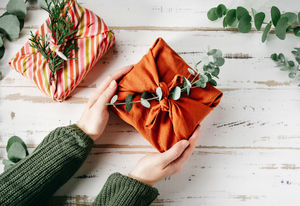
Paper tape is a much eco-friendlier alternative to conventional tape, which is made from plastic.
Water-activated tape uses an adhesive that’s water based and doesn’t leave any sticky residue so your wrapping paper can be kept for the recycling.
Another option is to reuse the paper next year by applying very small amounts of tape to make it easier to avoid having to tear it. Then you can save what you can for Christmas 2023.
If you’re left with a small section at the end of a roll of wrapping paper, don’t throw it away. Instead, layer your scraps - either by looping one small section on top of another, or by creating a half-and half effect.
Reuse paper gift bags from previous years instead of buying new ones or consider investing in fabric bags that can be reused over and over again.
There are many tape-free wrapping techniques online to try, or you can try furoshiki, a traditional Japanese method of using cloth to wrap and transport gifts. Old maps, calendars and newspapers can also make great gift wrapping.
Natural items such as holly can make attractive embellishments instead of ribbons.
GIFTS
WWF-UK says when buying gifts think: less but better, putting the time into picking a quality item that will last a long time.
This reduces the chances of gifts going to waste and can be better for your wallet.
Look at the materials gifts are made from and keep sustainability in mind, says WWF-UK.
The charity says ensure wood and paper gifts are made from recycled or Forest Stewardship Council (FSC) certified materials, avoid single plastics items that can’t be recycled and look for things like organic-certified food and clothing.
Buying second-hand items is another way to be kinder to the planet as saves on resources needed to make new products, while buying local is a good way to both reduce your carbon footprint and support local business.
Try buying from local craft makers and producers or a nearby farmer’s market.
Rather than buying a physical item, consider an experience gift such as tickets to the theatre, membership of a favourite attraction or a cinema e-gift card.
DECORATIONS
Unless your tree decorations are damaged or broken, do your best to reuse them each year.
Baubles and ornaments used every Christmas will be more special because they will have more memories attached to them.
If you need new ones then consider looking for hidden gems in the local charity or vintage shop.
Instead of plastic ones that are more likely to break, choose materials such as wool, wood, rattan and recycled glass.

The National Trust suggests making your own paper chains with used wrapping paper, or pick up a handful of pine cones from your local woodland. For a fragrant addition to your decorations, it suggests baking slices of oranges studded with cloves and fasten to your tree with red ribbon.
Many Christmas crackers are not recyclable, and the toys inside are often made of plastic. Instead, look out for FSC-certified crackers.
Reusable DIY crackers are another great option as you can fill them yourself with sustainable options like chocolates and personalised festive favours.
Sustainable shopping expert at British Wool, Graham Clark, says: "Look out for eco-friendly décor such as wooden hanging ornaments or recycled festive bunting. Put simply, just avoid buying poor quality decorations which will result in you binning and rebuying next year.
"Get crafty and create your own, why not knit Christmas decorations for the family or get the kids involved and create dried orange garlands or leaf baubles. And if at all possible, avoid the tinsel!"

